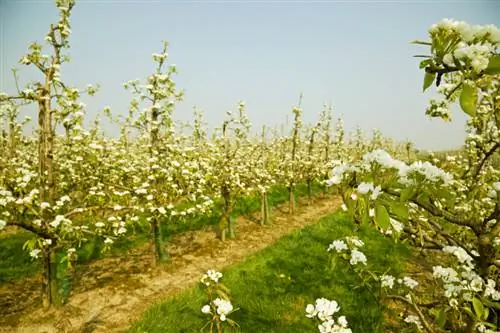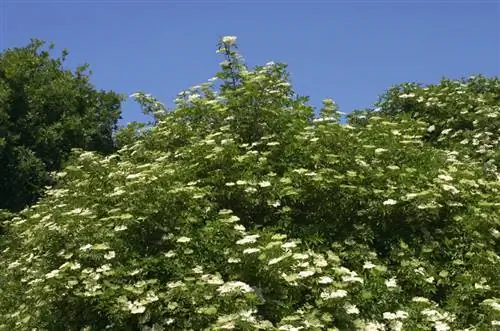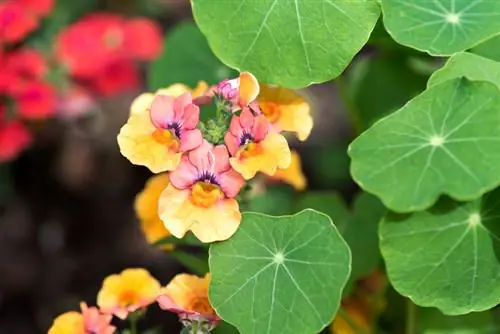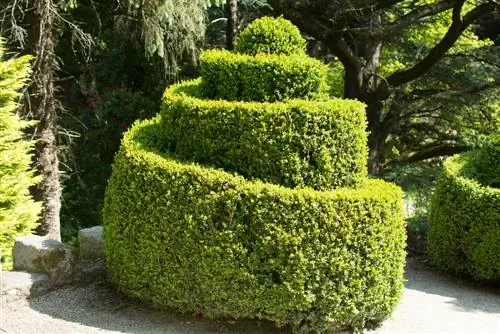- Author admin [email protected].
- Public 2023-12-16 16:46.
- Last modified 2025-06-01 06:02.
Pear trees are naturally deep-rooted. They form a large network of roots that stretch out in all directions. Since the cultivated forms are refined on other trees, the pear has developed into a shallow-rooted plant.

How do I protect the roots of a pear tree?
Pear tree roots are usually deep-rooted, but in cultivated forms they are shallow-rooted. To control long runners, they can be dug up and trimmed. Young roots are delicate and voles particularly like them. Protect them with chicken wire, vole traps or scents.
What to do about long runners?
The root system of pear trees corresponds in size to that of the tree crown. It can therefore make sense to cut off roots that are too long in order to limit the growth of the tree crown.
The roots also develop runners that can be several meters long. These often harass other plants, but are also sometimes a danger to pipes or sidewalks.
In order to stop the spread of the roots, the runners are cut off. Because they have shallow roots that run close to the surface, they can be easily dug up and cut off with a sharp knife or axe. Regular shortening prevents damage to pipe systems and house walls.
Delicate root system of young pear trees
The roots of young pear trees are sensitive. When planting out, care must be taken to ensure that the roots are not broken or otherwise damaged.
If older trees are planted in another location, the root system must be completely dug out. Only very long runners may be cut, otherwise the tree will grow more poorly.
Pear tree roots - the favorite food of voles
Voles like to eat the roots of pear trees. They can cause significant damage and cause entire trees to die. Voles and other pests must therefore be driven away immediately.
If the tree disc was covered with a layer of mulch for fertilization, this should be removed in autumn. Otherwise, the unwanted garden users will use the mulch as winter quarters and eat away a large part of the roots.
If you are sure that the pests are really voles and not the protected mole, you can take the following measures to protect the root system:
- Protect roots with wire mesh baskets
- Put out bait in spring
- Set up vole traps
- Repel voles with noise and smells
Tips & Tricks
The pear tree you planted last fall won't sprout in the spring? Gently pull on the trunk. If it can be easily removed from the soil, voles were at work. They often only leave a lower end of the tree without roots, which looks like a sharpened pencil.






